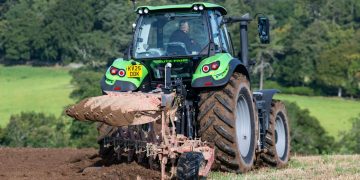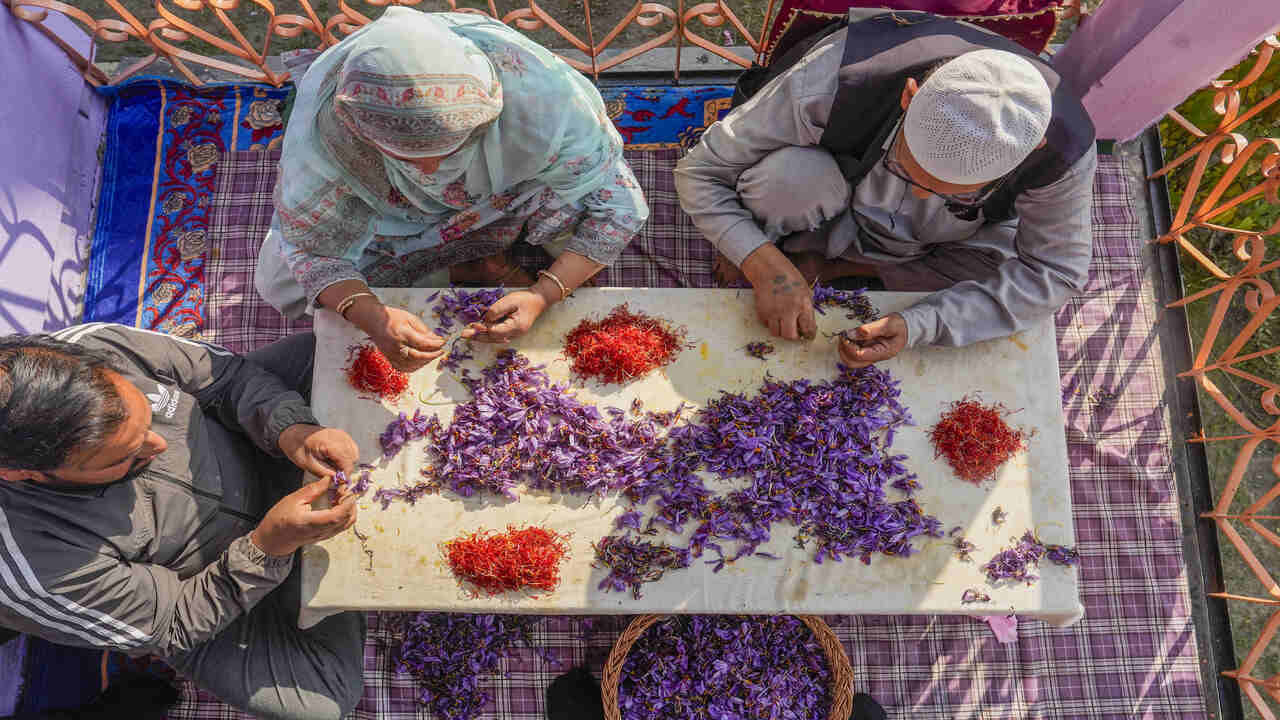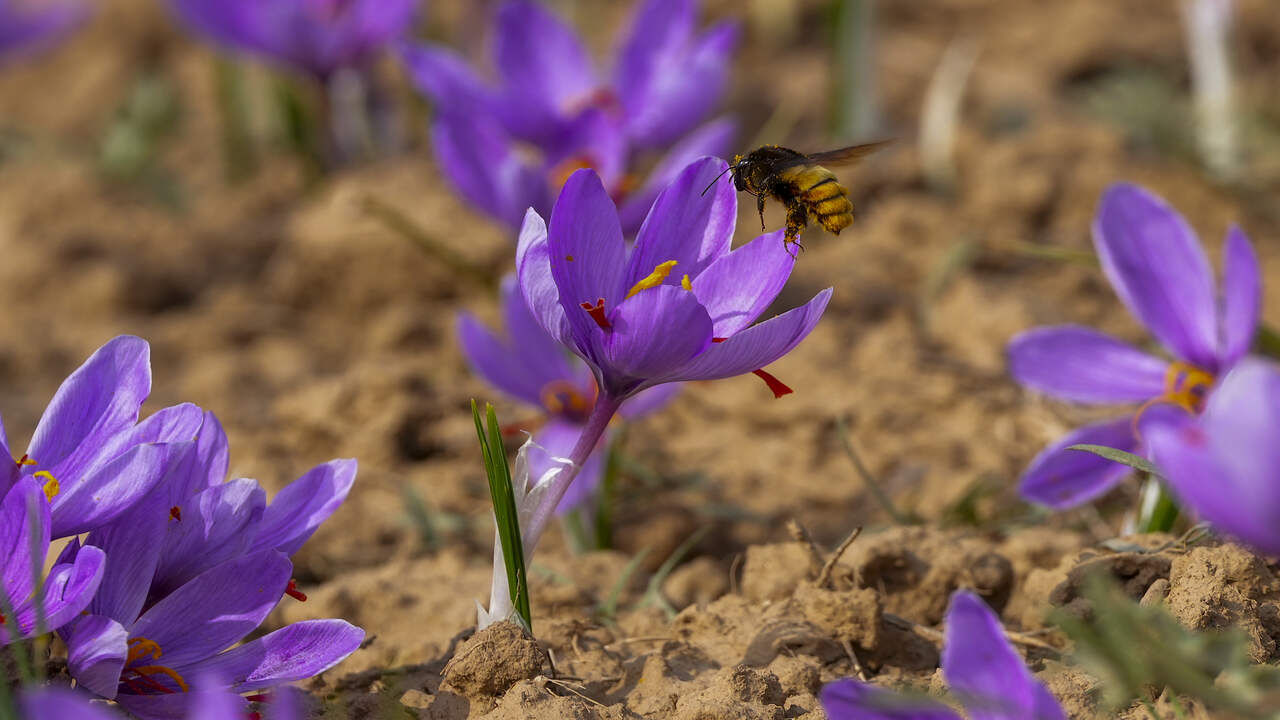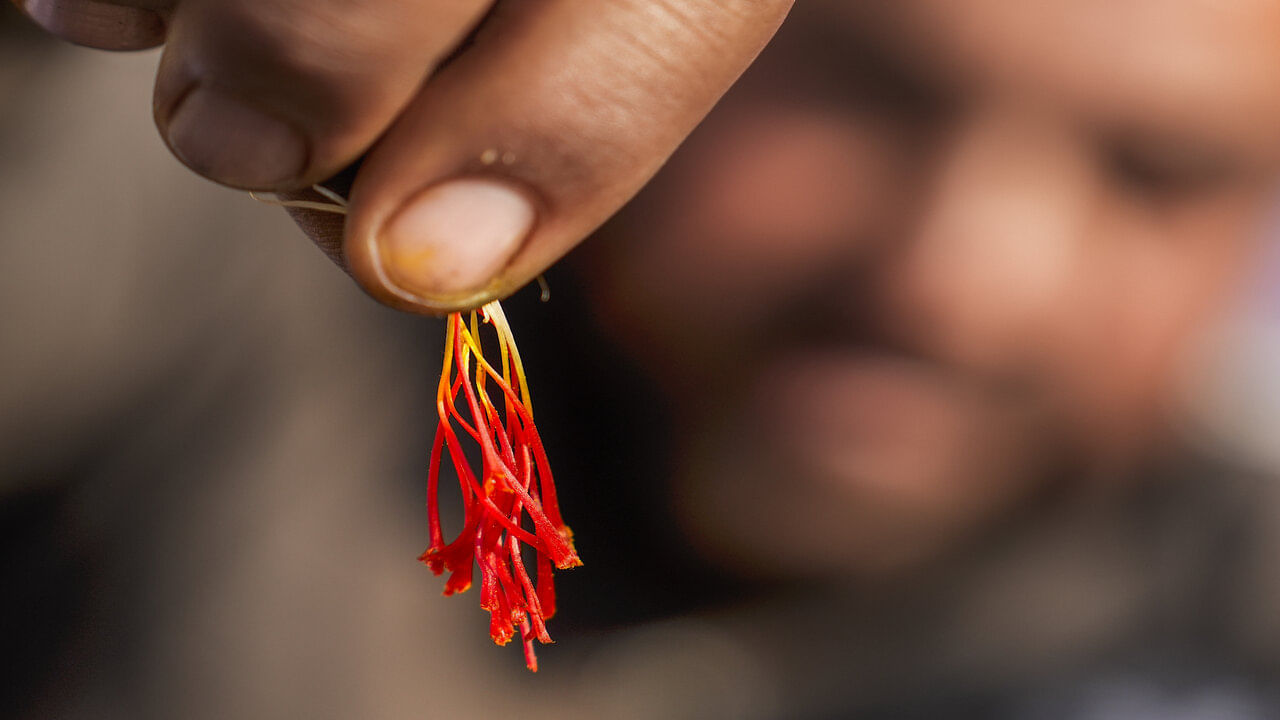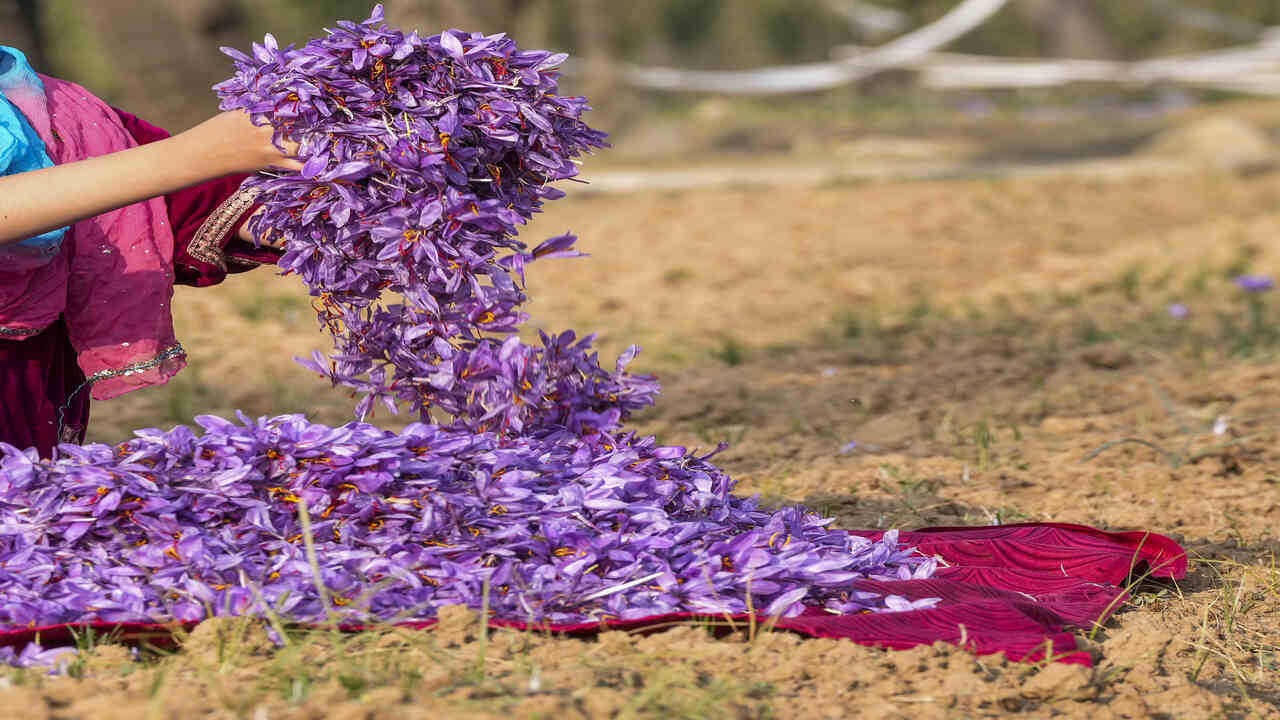As the saffron season begins, saffron fields in Pampore in south Kashmir's Pulwama district are seen heaving with the crop. Farmers have started harvesting the saffron crop.
Generally, the sowing of saffron crop in Kashmir is done in the month of March-April every year and the harvesting of saffron crop starts in the month of November. Small farmers who cultivate saffron sell their saffron through their shops located in Pampore.
With the arrival of winter season, Kashmir sees an influx of tourists from across the country. The captivating flowers of saffron are attracting tourists. Tourists visiting Pampore learn about how saffron is cultivated and are delighted to see saffron flowers fluttering in the field.
The largest saffron cultivation in Kashmir is at Pampore in Pulwama. The fields of Pampore are seen waving with the purple flowers of saffron. Since the saffron here is of high quality, there has been a commendable effort by the government to give GI tag to saffron.
GI tag is given to products that are produced in only one area. This thing should also be an identity form of that area. Woolen weaving in Kashmir is also known for saffron along with Sukamewani. Kashmir's saffron has got a GI tag thanks to the government's efforts. Which is attributed to its reliability and quality.
Cultivation of saffron is labor intensive and expensive as it yields very little saffron after planting in a large area. As it is now the season of saffron harvesting, the process of separating and drying saffron from the flower is done almost at home in Pampore. (Image Courtesy-PTI)

